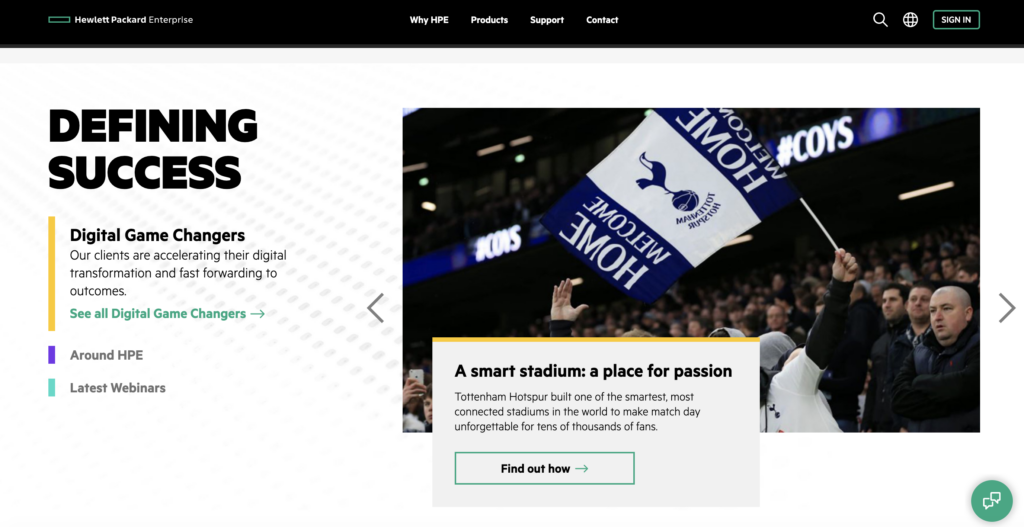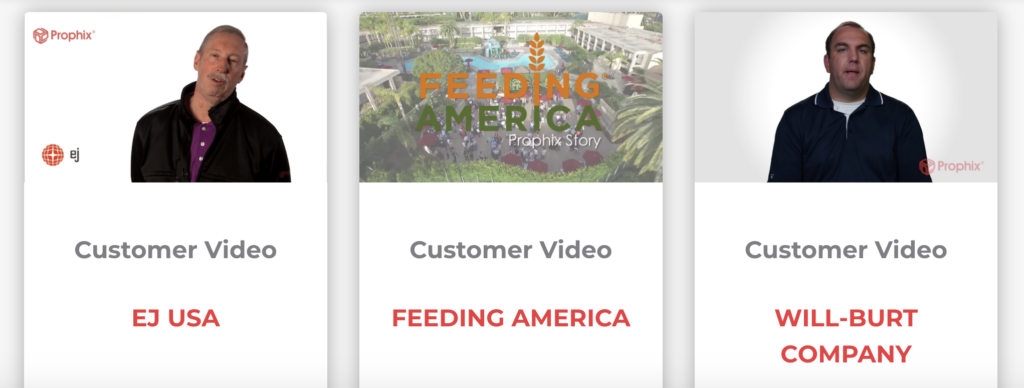How to design customer success stories that transform your professional services B2B marketing
A customer success story is an account to highlight the experience a customer has had with your product, the challenges they faced before, how the product has helped, and what degree of success they’ve since accomplished.
Customer success stories are used by professional services marketers to reassure new customers that their solution and process of working together, solves their problems, by demonstrating it has worked for others before.
Velo has developed award winning programmes for a number of clients including Sage that have drawn on using customer success stories in marketing communications.
Customer success stories can be shown in any client-based content, that can be a video, written case studies, social posts & client testimonials.
TIP: Use more than one method in conjunction with another, to reap the full benefits of the customer success story you are publishing.
So, in this post, we’re going to unpack what we’ve learned about designing and delivering customer success stories that improve the effectiveness of professional services marketing.
Why use customer success stories?
Customer success stories offer a number of benefits to b2b professional services businesses.
- They act as a project showcase, showing the work you do, the results you achieve and the size and scale of clients and sectors you partner with.
- They take the theory and bring it to life, demonstrating your capabilities in actual use.
- They illustrate the size and calibre of brands you work with, especially when complicated procurement and matrix management structures are involved.
- They show your impact and the effectiveness of your approach – justifying a client’s faith and the fee.
- They provide an emotional/human-centric storytelling aspect which is essential in developing resonance.
- They help to signpost the intended recipient towards a next action when they include a data capture opportunity.
Things we learned developing customer success stories
1. Follow a dedicated process. A simple four-step process involves creating a structure that takes the consumer of the success story through the following steps Context > Challenge > Solution > Outcome (Results and Testimonial).
2. Go beyond the functional. Yes, you want to show how your product helped transform a client, but be mindful of the story aspect. Be sure to cover how they felt at different stages of your engagement. Ask questions like “How did the client feel at the beginning versus the end?” and “What struggles did the project manager face?” and “How did they feel when they overcame them?” Any unintended benefits can also spotlight bonuses from working with you.
You might go a step further and focus on your customer’s customer. HP talk about how they’ve improved connectivity at The Tottenham Stadium, London, enriching the match-day experience for fans. It makes the UK home page and delivers an impressive 5-page glossy overview.

3. Show that there are humans behind the product. It’s crucial to humanize your marketing, especially in the B2B sector where everything can often seem quite formal and professional. However, this is where you can really draw customer engagement and customer success stories are a great opportunity to display this. Success stories show the impact of your product to real people and is the perfect platform to get potential customers to resonate. This is crucial as consumers with an emotional connection to a brand have a 306% higher lifetime value, stay with a brand for an average of 5.1 years vs. 3.4 years, and will recommend brands at a much higher rate (71% vs. 45%). Making your communication more human shows that there are real people behind your brand, putting in the effort and ready to offer value.
4. They need planning. It’s quite likely that the first one will take way longer than anticipated due to approvals, so consider working on more than one. You might build out success stories with different client contacts or about different aspects of the delivery – product performance, service, aftercare.
5. Keep the language simple. Use concise, clear language to tell a story. You don’t need to use fancy jargon to create a compelling customer success story — in fact, it’s better if you don’t. The story needs to be easy to follow so the reader can clearly understand how your company helped solved a similar problem for someone else.
6. Make it easy to read (or watch). Modern online content needs to be “snackable” which means it needs to be concise and “scannable”. Break up heavy text with marked out quotes, consider using call out facts and figures, and use bullets and numbering. Save expansive detail for more in-depth downloadable versions.
Customer’s attention spans are depleting yearly. A study showed that people now only have an attention span of 8-second which decreases 88% every year! It’s imperative to avoid long paragraphs of small text and switch up the copy to keep potential customers engaged, to make sure whilst you do have their attention that they notice the key points.
If it’s video (and this has to be the preferred medium), you want to be shooting authentically on-site to capture real world footage, mixed with library footage. Make sure you provide captions to support the “easy to watch” mindset as many viewers will have sound off as standard.
Check out the Prophix customer success video resource library here for inspiration on creating your own.

7. Think about photography. Header images are crucial as these often follow the page link around the web when shared. But it’s also important to use inset images too. These could be stills showing the customer in-situ, or talking to the camera, or in branded situations where their logo is prominent. Images and other visual assets also give legitimacy to your story further building trust and a good rapport with any potential customers. You’ll certainly want to use the logo and customer contact but use all aspects available to you to drive home the association.
8. Shine a light on it once live. People arrive at your site for different reasons and undertake different journeys. So you need to give critical content like success stories the best chance to shine. That means creating the main page, writing a blog or news post talking about it, creating a widget or pop-up graphic for site-wide use, and adding it to your home page. The main page should include proof your product works. The best way is in the form of success stories, be mindful that this is your homepage, so keep it brief and link to further material if required.
We like how Atkins do it. They repurpose customer success stories into more expansive downloads, press releases and more. This example of their HS2 rail project in the UK is one to admire.

9. Think about what you’ll need for distribution. You’ll need to create content to support promotion of the success story once it’s ready to share. This might require a set of graphics for social use – maybe some teaser graphics or stills from any video or audio with captions. If there are stand out quotes or data referenced, you’ll want graphics for those too. Carousel posts and infographics can be highly visual and highly viral ways of creatively sharing success story content too.
Interested in exploring the Sage Champions approach to customer success stories and advocacy?
Check out the case study here or start a no obligation conversation click here.
















